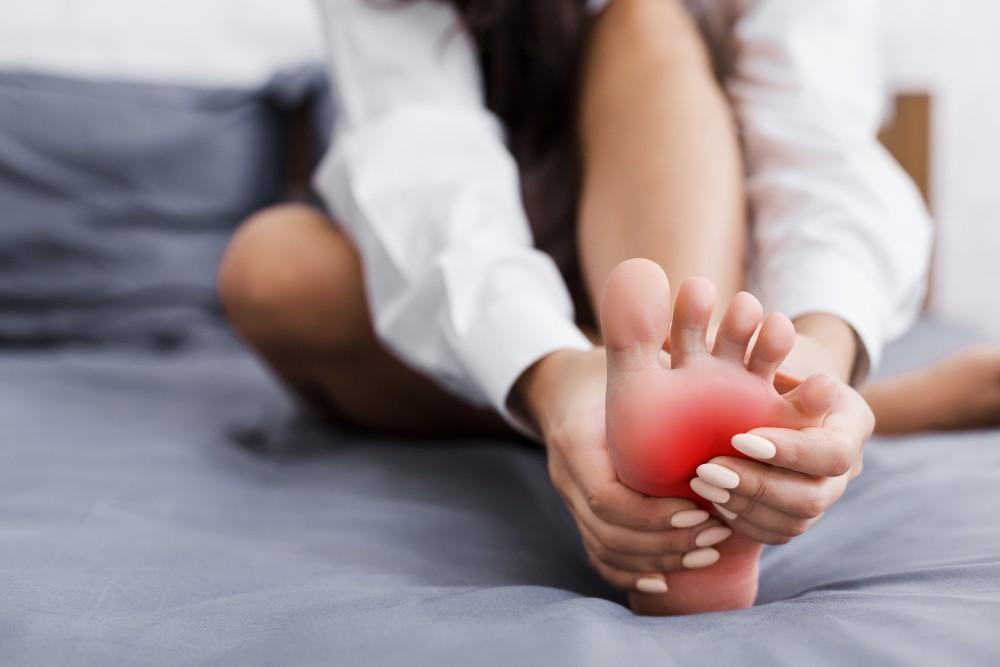
Tips for Preventing Hammertoe

A hammer can get the job done well if you’re working on a carpentry project, but hammertoe is a podiatric condition you definitely don’t want.
Hammertoe can start subtly, but as it progresses, symptoms become uncomfortable, not to mention the fact that your middle toes become locked in a bent position, which can affect your mobility.
If you need hammertoe treatment, our attentive team at Premier Foot & Ankle can help. In addition to top-notch patient care, we also provide education on what you can do to prevent hammertoe.
Our team treats a wide range of foot and ankle conditions, from foot problems that affect people living with diabetes to plantar fasciitis, and every provider here is intent on customizing a treatment plan that meets your unique needs.
Why does hammertoe develop?
Hammertoe happens when the middle joint and supportive tissues of your toe (typically the middle three toes) sustain continuous pressure for long periods. This pressure essentially dislocates your toe.
As time goes on, you experience:
- Tightening of your toe tendons and muscles
- Curling toes
- Frozen toes
- Corns and calluses
- Swelling
- Skin discoloration
- Pain that may start in your toe but extend to your foot
Through an examination, your Premier Foot & Ankle podiatrist considers how to address your hammertoe. Flexible hammertoe is mild — your toes might be starting to curl, but you can still bend them. Semi-rigid hammertoes become stiffer and more difficult to uncurl, while rigid hammertoes won’t uncurl and freeze completely.
In addition to causing considerable discomfort as it progresses, your hammertoe can change how you walk and make moving more difficult. For example, it may prevent you from playing your favorite sports and engaging in other activities you enjoy.
Hammertoe isn’t fun — how can I prevent it?
Fortunately, there are steps you can take to reduce the likelihood that you’ll be dealing with the pain and mobility problems of hammertoe later on.
There are some things you can’t control that put you at higher risk for hammertoe like having a high arch, flat feet, or long toes, or living with certain health conditions like diabetes and rheumatoid arthritis.
Your footwear can make a big difference in terms of whether your toes stiffen and curl eventually or not. Avoid wearing shoes that are too small or have narrow toe boxes, and steer clear of shoes that don’t properly support your arches — both put your toes in unnatural positions for extended periods, which isn’t good.
Sky-high heels aren’t your friends either, as they have the same effect. Seek out styles that have comfortable, cushioned arch support. This helps keep your toes properly aligned.
When you try on shoes, don’t rush it. Walk around in them before you buy, and if you feel any discomfort, chafing, or tightness whatsoever, keep browsing! It also helps to go shoe shopping at the end of the day, when your feet are their largest.
Talk to your podiatrist about bunion prevention too, since having bunions contributes to the development of hammertoe. Bunion prevention also involves paying attention to how well your shoes fit and avoiding styles that crowd your toes — high heels and shoes with pointy toes.
It also helps if you periodically pick up small objects, like pebbles, with your feet to exercise your toes. Spoil your feet by elevating them when you watch TV, enjoy a good foot massage, and get up and stretch after sitting for a while!
Getting treatment for hammertoe
If you’re already a hammertoe sufferer, you’re far from alone. Hammertoe accounts for about 20% of the problems that cause people to seek treatment from a podiatrist.
We offer innovative treatments that ease hammertoe symptoms and make you comfortable again. These include assistive devices like custom orthotics, tape, splints, and pads for your shoes, as well as anti-inflammatory medications and creams that can provide relief. Some patients respond well to steroid injections, and physical therapy can be effective.
If your hammertoe has progressed to the rigid stage, your podiatrist may recommend surgery to straighten your toes and reduce the pressure on your foot tissue with the help of specially designed implants and hardware.
It’s easy to think you’ll take care of your hammertoe issues some other time, but it pays to get treated promptly, so your symptoms don’t progress and you can continue to do the things you enjoy.
Contact one of our five convenient Texas locations to schedule an appointment today. Call our office or book online anytime. Please note that our Sherman office is relocating to 4616 US Highway 75, Suite 170, in Denison.
You Might Also Enjoy...


Lapiplasty: How 3D Bunion Correction Works

How to Get to the Root of Your Chronic Heel Pain

5 Ways to Care for Your Athletic Feet This Year

How to Keep Toenail Fungus From Spreading


